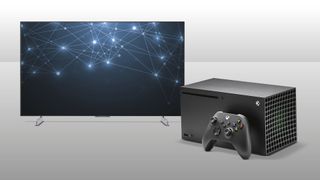Gaming is rapidly becoming one of the main ways in which most of us use our TVs, which is why, when shopping for your next OLED or affordable LCD, how well it’ll work with your PS5, Xbox Series X/S or PC may be a big item on your tick list.
Aware of this, TV makers have been adding a plethora of new gaming focussed features to their wares, many of which have catchy technical names like VRR and ALLM that you’d traditionally only see on specialist PC monitors.
Here to help you get the right gaming TV for your specific set-up and budget, our home cinema reviewers have created this list, where we detail the top performing sets we’ve tried and tested. You can get a detailed description of how we test gaming TVs at the bottom of the page.
The short version is, we run them through a comparative series of tests, where we check if all the features work as they’re supposed to with a current generation console connected. From there we put them through a series of real world checks to see how they perform in key areas, such as latency, picture quality and more – so you can trust our buying advice.
The quick list
Here's a quick breakdown of our picks for the best 4K TVs for gaming with a short summary and some of the key features that each offers. Want more details? Click the photo of the TV to drop down to the in-depth entry.

The best gaming TV overall
The 42-inch C4 is a great gaming TV at an ideal size for many people.
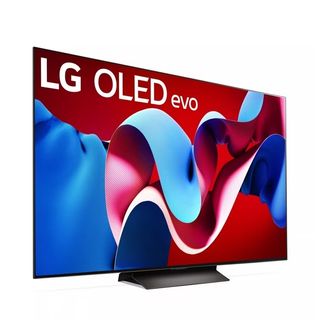
The best large gaming TV
In performance-per-pound terms, there is no better large gaming TV than this 65-inch C4.
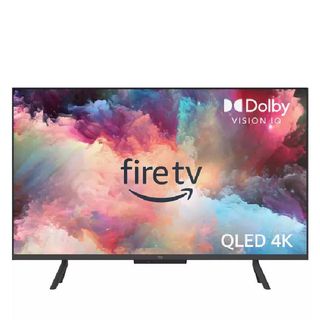
The best cheap gaming TV US
If you're on a strict budget but want a big-screen gaming TV that punches above its weight, this is the best we've tested.

The best cheap gaming TV UK & AU
For the money, you get a complete set of gaming features and a picture that's perfect for showing off lush next-gen graphics.
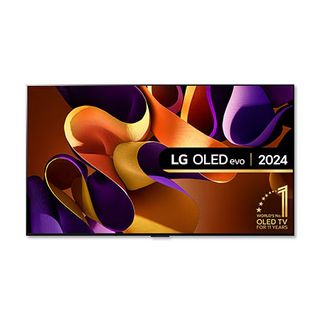
The best premium gaming TV
With the same gaming features as the C4 but a brighter OLED panel, this gaming TV is for you if you want something extra special.

The best Sony gaming TV
While you certainly don't need a Sony TV to get the best out of a PS5, this is a cracking TV in its own right, too.
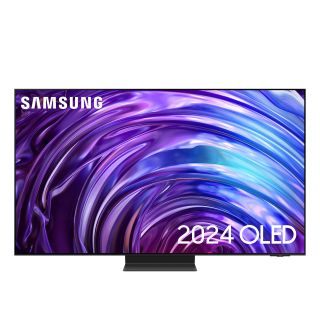
The best Samsung gaming TV
Last year's flagship Samsung 4K QLED is a super-punchy and now great-value OLED alternative for you.
Recent updates
24th September 2024: Updated to replace the LG C3 with the C4, Sony A80L with the Bravia 8 and Samsung QN90C with the S95D following new reviews and price fluctuations.

I'm What Hi-Fi?'s TV & AV Editor, and I've been an avid gamer since the days of the BBC Micro. Gaming drives many TV technology enhancements and every TV I've ever bought – from a widescreen Sony Trinitron CRT in 2001 to a 32-inch HD-Ready Toshiba flatscreen for the launch of the Xbox 360 and on to my current 4K OLED – has been chosen with gaming in mind. Specs matter for gaming, so I'm looking for a TV that supports 4K/120Hz, VRR and ALLM, and I also expect very low input lag. Just as important, though, is overall picture quality, which needs to be brilliant but balanced, so that it can do justice to both the punchy, colourful games out there but also those grittier modern blockbusters. TVs that tick all of the boxes are rare, but I consider it my mission (or 'quest', if you prefer) to find them.
The best gaming TV overall
The 42-inch LG C4 is the overall best option we recommend to gamers. There are quite a few reasons for this. First is the fact its small form factor means it is just about small enough to double as an actual PC monitor, or to use in your study/bedroom, which is where a lot of us do the majority of our gaming.
The second is its awesome stack of gaming features. There’s four full speed HDMI 2.1 inputs around the TV’s side, all of which will let any modern PC, PS5 or Xbox Series X console run at full speed – the latter being helped by the fact it supports the Dolby Vision Gaming HDR, which many sets don’t.
By comparison, most OLED TVs only have two HDMI 2.1 sockets, one of which doubles as an eARC, which leads to a lot of cable swapping if you have two consoles and a Dolby Atmos soundbar to connect.
Variable refresh rates and ALLM (auto low latency mode) are also on the cards and let the TV go up to a staggering 4K/144Hz – a fact appreciated by our editor who is a diehard PC gamer with a rig powerful enough to take advantage of the feature.
As a final perk, webOS supports all the common gaming streaming apps, including GeForce Now and SteamLink, which both ran smoothly during our checks thanks in no small part to the C4’s advanced Alpha 9 Gen 7 processor.
But, third, and most important, the 42-inch LG C4 delivers stellar picture quality, both for gaming and movies. Testing the C4 we found it is a huge step up on its predecessor, the LG C3. Whether it was the moody, dim dystopian cityscape of Blade Runner 2049 or the bright apocalyptic desert of Mad Max: Fury Road, the 42-inch C4 delivered a dynamic, but accurate picture that left us utterly enthralled.
Hence our reviewers’ conclusion: “The 42-inch LG C4 is the best small OLED TV money can buy right now.”
The only downside is that, like nearly all the sets in this list, you will want to invest in a soundbar as the speakers are very weak, even by inbuilt TV standards – anything with even a sniff of low-end heft drove them to distortion during our checks.
Read the full LG OLED42C4 review
| Attributes | Notes | Rating |
|---|---|---|
| Picture | Sharp, solid and detailed without exaggeration | ★★★★★ |
| Sound | Weak, even by small TV standards | ★★★☆☆ |
| Features | Great app selection and flawless gaming specs | ★★★★★ |

The LG C4 is the best small OLED I've personally tested this year, especially for gamers. The small unit features all the connectivity you need to run multiple consoles at full speed with a Dolby Atmos Sound bar attached and impressed me so much, I'm keeping an eye out for one during Black Friday for my home office. Our only big gripe is its weak audio, which is why we recommend investing in a separate soundbar alongside it, such as the Sonos Beam (Gen 2).
Best large gaming TV
If you’re after something a bit bigger, then the 65-inch LG C4 is the TV to get. The TV shares all the same core DNA that makes the 42-inch model great. Four HDMI 2.1 inputs capable of 4K/144Hz are included, making it easy to get multiple current generation consoles, a PC and Dolby Atmos soundbar up and running at full power with no cable swapping required.
Speaking of PC compatibility, there’s the same 144Hz max refresh rate which, combined with its ALLM and VRR features, will let it play games at an incredibly high number of frames per second, creating a wonderfully smooth and reactive experience, based on our checks.
WebOS24 and the same Alpha 9 Gen 7 processor are also on board and let you easily run gaming feature apps including GeForce Now and SteamLink with zero issue.
And on top of all that, though its size means it has a lower pixel density than the 42-inch model, during our side by side checks we found the larger C4 offers improved picture quality in a few key areas.
Colours, particularly during dark scenes, feel slightly warmer, and the TV offers slightly better light control giving the image more three dimensionality. This small difference was particularly noticeable on horror titles and military online shooters, where the two factors gave a slightly elevated sense of realism.
Our reviewers’ conclusion says it all:
“The C4 is a surprisingly large upgrade on the uncharacteristically dull C3 of last year. Big improvements to brightness and sharpness make for an image with lots of pop and dynamism, and the rich tone and vibrant colours are a delight – but LG has tempered all of this with realism, consistency and authenticity.”
The only reason it’s not top of this list is that, due to the location most people play games and the lower price, we feel the 42-inch is slightly better for gamers from a performance-per-pound/dollar perspective.
Read the full LG OLED65C4 review
| Attributes | Notes | Rating |
|---|---|---|
| Picture | Punchy, but accurate | ★★★★★ |
| Sound | Weaker than we'd like | ★★★☆☆ |
| Features | Flawless gaming specs | ★★★★★ |
Best cheap gaming TV US
The 65-inch Amazon Fire TV Omni QLED is the best gaming TV on a budget we've tested that's currently available in the US, where the TCL below is unfortunately not available. Though it's missing the ability to play games in 4K/120Hz, considering the amount of screen real estate and its otherwise competitive feature set it's still a strong value option for any PS5 or Xbox Series X/S owner.
For gamers, outside of its price, the big selling point of the Omni QLED is its support for ALLM and VRR, and its dedicated Dolby Vision game mode. ALLM aside, these aren't features we see at this price very often. The 11ms of input lag that we measured also makes it incredibly responsive compared to many of the other gaming TVs on a budget that we've tested at this level.
If that isn't enough to tempt you, it also offers generally decent picture quality considering its price. There's a slight lack of detail in darker areas, and motion can occasionally be a bit smeary, but whether it was Rogue One in Dolby Vision or Blade Runner 2049 in HDR10, the TV offered best-in-class performance for its price. This is why our testers concluded:
"It’s telling that members of our test team, who are spoiled on a daily basis by the latest OLED TVs, agreed that they would be happy to have the Omni QLED at home. There aren’t many TVs at this price that they would say that about."
| Attributes | Notes | Rating |
|---|---|---|
| Picture | Reliable, though black levels aren't perfect | ★★★★☆ |
| Sound | Adequete but you'll need a soundbar | ★★★★☆ |
| Features | The best you'll find this price | ★★★★☆ |
Best cheap gaming TV UK
At this price, even a modestly-specced 65-inch TV would look pretty attractive, but this one is that and then some. In fact, it has most of the gaming features you could ask for, making it very attractive to anyone looking to get their gaming kicks on a big screen that costs less.
It's a bit chunkier than a lot of TVs at this size, and not evenly thick throughout, so it's not the neatest proposition if wall-mounting. But the bulk houses plenty of features, including two HDMI 2.1 sockets (out of four total HDMIs) capable of handling 4K games at 120Hz. Its Game Master Pro 2.0 system supports VRR in the AMD FreeSync and ‘basic’ HDMI flavours, and it has ALLM switching so the TV will always turn to its fast-response Game mode when a game source is detected.
There's even a dedicated gaming menu, with helpful signal information and game-specific features such as an Aiming Aid, multiple game picture presets, and the facility to adjust the brightness of dark parts of the picture without overcooking the brightness elsewhere.
And when it comes time for telly? You'll be equally well served, with support for all the main HDR formats, including Dolby Vision and HDR10+, although you do get some minor clouding with some images. Google TV handles the software side of things, and TCL will even gift UK customers who are missing some catch-up services a free Roku streaming stick to fill the gaps.
Add bright pictures, excellent black levels for the price, and a high level of sharpness and clarity, and, even with a subwoofer that can sometimes be a bit buzzy, you've got yourself a gaming TV on a budget that can mix it with the big boys.
Read the full TCL 65C845K review
| Attributes | Notes | Rating |
|---|---|---|
| Picture | Stunningly bright, contrast-rich and colourful | ★★★★★ |
| Sound | Occasional subwoofer buzzing | ★★★★★ |
| Features | Comprehensive gaming features | ★★★★★ |
Best premium gaming TV
If money is no object and you just want the best TV for gaming available, regardless of cost, then the LG G4 is our current recommendation.
Though it is much more expensive than its C4 sibling, the G4 comes with a few perks. The biggest is the inclusion of LG Display’s micro lens array (MLA) tech. This is a What Hi-Fi? Award-winning technology that helps the LG G4 deliver significantly higher peak brightness levels than its sibling, which has a basic OLED panel.
In fact, during our head-to-head checks we found the tech makes the G4 one of the brightest sets available in general, only being matched by the likes of the Philips OLED909, which also has MLA, and Samsung S95D, which has competing QD-OLED panel tech.
This lets the LG G4 offer a more immersive experience during bright scenes and games, especially in Dolby Vision Gaming HDR. Motion handling and dark detail levels are equally impressive and slightly a cut above what you’ll get on the C4 models featured higher on this list.
Outside of this, its gaming specific features remain on a par with all LG’s other 2024 OLEDs. There are four full speed HDMI 2.1 sockets on board that can run games in 4K/144Hz if a powerful enough PC is attached, as well as the PS5 and Xbox Series X/S which are capped to 4K/120Hz.
Hence our testers heaped praise on it, concluding:
The G4 is a clear step forward for LG TVs. It doesn’t reinvent the wheel, but LG’s second generation MLA OLED tech improves on all the areas that made the first generation great... This plus its excellent suite of gaming features make it a fantastic option for any home cinema enthusiast yet to invest in a next generation OLED.”
The only reason it’s not higher on this list is its price. The picture perks are welcome, but not quite as huge a leap as we’d like to fully justify the disparity in price between it and the C4. This is why we currently recommend the cheaper model to most gamers.
Read the full LG OLED65G4 review
| Attributes | Notes | Rating |
|---|---|---|
| Picture | Bright, punchy and consistently accurate | ★★★★★ |
| Sound | A big improvement on the C3 but a soundbar would be a big improvement | ★★★★☆ |
| Features | Every gaming feature across all four ports – and 144Hz support, too | ★★★★★ |
Best Sony gaming TV
The Bravia 8 is a TV with big shoes to fill as the successor to the What Hi-Fi? Award-winning Sony A80L from last year. Thankfully, having put it through its paces against its predecessor and archrival, the C4, we can confirm it’s a fantastic gaming TV, especially for PS5 owners.
Featuring a base OLED panel, the key selling points are its stellar picture quality and best in class (by TV speaker standards) audio.
If we were going from a raw picture-performance metric the Bravia 8 would be higher on this list. Whether for the incredible black level detail that will make any horror title shine or the wonderful peak bright segments of our tried and tested Pan test disc, the Bravia 8 delivered an authentic but vibrant and immersive picture that delighted our testers.
The TV’s atypical sound system, which uses Sony’s proprietary Acoustic Surface Audio+, is also the best we’ve experienced on a TV this year. This uses underscreen actuators, rather than traditional speakers, to create a virtual surround sound. During testing we found that, while Sony has undeniably had to sacrifice low-end heft for greater control, the system works a treat, delivering balanced audio with a suitable amount of space between each element of the soundstage.
This lets dialogue sound much better separated and audible over background noise than rival sets. For gamers. It also does a good job of giving the audio a sense of direction, letting our testers better hear where gunfire and the like was coming from on Atmos/surround-sound capable titles.
So why isn’t it higher on the list? That’s because for gamers specifically there are three minor issues that make the C4 holistically better.
First, the Bravia 8 only has two HDMI 2.1 inputs, one of which doubles as an eARC. So if you have two current generation consoles and a Dolby Atmos soundbar, you will have to do a lot of cable swapping – which is especially annoying as it has feet rather than a swivel stand mechanism.
Secondly, unlike the C4, its max refresh rate is 120Hz, rather than 144Hz – though being fair, this will only be a problem for PC gamers.
Third, it isn’t available below 55-inches. So if you want to use it as a PC monitor or in a bedroom or study it’ll likely be too big. But even with these caveats it’s still a fantastic OLED TV and one well worth considering if you’re a Sony fan.
Read the full Sony Bravia 8 review
| Attributes | Notes | Rating |
|---|---|---|
| Picture | Wonderfully immersive | ★★★★★ |
| Sound | Impressively atmospheric sound | ★★★★★ |
| Features | Good, but not best in class for gamers | ★★★★☆ |
Best Samsung gaming TV
The Samsung S95D is the tech giant’s latest flagship QD-OLED set, and based on our testing one of its finest to date, especially for gamers.
The TV is the third set from Samsung to feature brightness boosting QD-OLED tech. This is a combination of Samsung’s own Quantum Dot tech and OLED – the latter being something Samsung shunned for years as the panels are made by rival LG Display.
Putting it through its paces in our viewing rooms against key sets, including the MLA-equipped Philips OLED909 and Award-winning Sony A95L, which also features QD-OLED, it proved to be the best Samsung TV we’ve seen in years.
For your money you get a bright picture, full of Samsung’s signature “punchy” colour profile and tuning, but with an added layer of refinement. Across every test disc and game we threw at it the S95D delivered phenomenal levels of brightness, contrast and colour. But the main reason it’s on this list is its excellent gaming support.
For starters, it’s the only non-LG OLED on this list to feature four full fat HDMI 2.1 ports, which makes it a valid option for people with multiple consoles, PCs and Dolby Atmos sound systems – which require all connectivity to go at full speed.
Then there’s its 144Hz max refresh rate, ALLM, VRR and robust gaming bar shortcut – which makes it quick and easy to adjust picture and audio settings on the fly while playing. Add to this the super low input lag we detected, which is a boon if you play online where every second counts, and it becomes an easy recommendation.
The only reason it doesn’t feature slightly higher on this list is the lack of Dolby Vision Gaming HDR support, which makes it less attractive than its LG rivals for Xbox Series X/S gamers. Microsoft’s new consoles both support the standard – and trust us, it makes any compatible game look oh-so-much better when implemented well.
Read the full Samsung QE65S95D review
| Attributes | Notes | Rating |
|---|---|---|
| Picture | The best we've seen on a Samsung | ★★★★★ |
| Sound | Good, but some fuzz during bassy scenes | ★★★☆☆ |
| Features | Excellent gaming support | ★★★★★ |
Also consider
Amazon Fire TV Omni QLED (50-inch)
If you’re on a very strict budget that can’t stretch into Mini LED territory then the 50-inch Amazon Fire TV Omni QLED is worth considering. Though its refresh rate caps at 60Hz, the inclusion of VRR support is atypical on a TV at this price. During our tests, though not perfect, this makes it the best gaming TV at this sort of level.
TCL 745K
The TCL 745K is a great value TV let down by one fatal flaw – for slightly more you can get the TCL845K, which offers a substantial performance boost based on our checks. But if you really can’t afford to pay any more it is still a good alternative.
Philips OLED809
If the LG C4 doesn't quite tick all your boxes and you only have one console to connect, we'd recommend checking out Philips 2024 step down OLED (if you're in the UK or Europe). It has the same 144Hz refresh rate, a useful game bar and the firm's custom Ambilight bias lighting. The latter will delight any RGB fan...
How to choose the best gaming TV
Which gaming features you need to look out for depend a little on which of the current-gen consoles you plan to plug into your TV.
Both the Xbox Series X and PS5 support 4K/120Hz gaming, which translates to smoother graphics at full resolution, while that’s also boosted by the presence of Variable Refresh Rate (VRR), which matches the TV's refresh rate to the frame rate being output by the console in real-time. Auto Low Latency Mode (ALLM) is simpler: it just means that the TV will automatically switch to its 'game mode' to reduce input lag when it senses a game signal from your console, while HGiG generally results in a more accurate HDR picture with deeper blacks and more detailed highlights. Only the Xbox has Dolby Vision gaming, so if you own a PS5 you don’t need to worry about that one.
None of these are essential features, but they will help your games to look as polished as possible, so choosing a TV that also supports them is wise if you’re going to be using it to play a lot of games.
Whether all of these standards are fully supported also depends on which HDMI port you use. They require the extra bandwidth offered by HDMI 2.1, so if you’ve got more than one games machine to connect to your TV, make sure it has enough suitably-specced HDMI sockets for all your gear – and bear in mind that one of them will probably be taken up by your soundbar.
Things get a bit more complicated if you’re a PC gamer. Many of the technologies mentioned above are supported by some graphics cards but you also have even higher refresh rates, custom resolutions and ultra-widescreen ratios to consider, which is why many PC gamers prefer monitors to TVs. This guide is primarily aimed at current-gen console gamers.
With all consoles you should be looking for a TV with low input lag, which dictates how long it takes for your button presses to be reflected as on-screen actions. Lower is better, but anything below 40ms will be imperceptible to almost all gamers, and 20ms or less is lightning-fast.
Finally, but very importantly, you also want a TV with excellent core picture quality: sharp, bright, with excellent blacks and vibrant, accurate colours. Arguably, those elements are more important than the specs mentioned above, which should really be considered the icing on the cake.
How we test gaming TVs
To put it plainly, manufacturers aren't always as honest or forthcoming about gaming specs as they might be, so we ensure that we test every TV to find out whether it supports the next-gen specs we're looking for and whether it does so properly and effectively. We also measure input lag ourselves and don't simply reprint the figure given by the manufacturer.
But specs only tell half the story, so we also test each TV's real-life performance with a number of games from a number of genres, on both the Xbox Series X and the PS5. Here, we're not only making sure that the TV lives up to its spec sheet, but also that it delivers the core picture quality we're looking for, from sharpness to responsiveness, contrast to colour vibrancy.
For example, it needs to have the punch and saturation to do justice to brighter, flashier games such as Astro's Playroom, but also a natural balance that doesn't oversaturate tonally subtler blockbusters such as Elden Ring.
We're also testing the sound here: while most gamers will (and should) connect their TV to a dedicated sound system (such as a soundbar) or their console to a gaming headset, there are those who will rely on the in-built speakers, so we need to ensure those deliver a clear, spacious and engaging sound.
All of our testing is comparative, so every gaming TV is compared side-by-side with the best 4K TV for gaming at its size and price, and every test we conduct is collaborative, so no one member of the What Hi-Fi? team rates a product in isolation. The end result is a completely unbiased, exhaustively thorough review.
Gaming TV FAQ
Do you need HDMI 2.1 to game?
If you have a current generation PS5, Xbox Series X/S games console or gaming PC with a modern GPU, you’ll need an HDMI 2.1 input to take full advantage of their next-generation features. The biggest of these is the ability to play games at high refresh rates. But to do this the TV will also need a high refresh rate panel. Traditionally TVs have been locked to 60Hz, but since the latest consoles from Sony and Microsoft launched, many sets can now go up to 120Hz. The benefit of this is that it lets games run at higher frame rates, making animations smoother and games generally feel more reactive by reducing the delay between each new frame/image being shown. The downside is that outside of LG and some Samsung TVs, most sets only have two HDMI 2.1 sockets, one of which doubles as an eARC input. This means you can’t have more than one current generation console connected alongside an Atmos speaker system or soundbar as the latter requires eARC to run.
Is OLED or LED better for gaming?
OLED TVs are a common sight at the top end of the market, and as a result, they are more likely to have all the features and connectivity you need to take full advantage of the PS5 or Xbox Series X/S’ features – though this is not a given, especially if you’re buying a refurbished older model. But that doesn’t mean an OLED TV is always going to be better than a competing LED-backlit LCD in every area. The caveats here are largely the same as OLED vs LCD in general. OLED offers deeper blacks due to the way it charges individual pixels, as opposed to a full backlight, to create images. But we’ve seen plenty of great LCD sets pass through our labs that deliver better value for money and beat OLEDs in certain areas, like audio performance and max brightness. This is why you should always do your research, even when paying top-dollar for an OLED set.
Is input lag a problem on gaming TVs?
Input lag (sometimes also referred to as input latency) is a key annoyance that can ruin any gaming experience, especially ones where reaction time is key. The term refers to the amount of time that passes between an electrical signal being sent and the corresponding action being enacted. In the case of gaming, this refers to the delay between you enacting a command on your gamepad and it playing out on screen. Having checked TV input lag times for many years, while they have improved, it can still be a problem on certain sets – which is why we still test for it whenever we review a TV.
Should I get an 8K TV for gaming?
Both the PS5 and Xbox Series X can handle 8K in theory, but neither has the feature enabled at this point, and Sony has even removed the logo from the PS5’s packaging. The current focus is more on higher frame rates, with higher resolutions potentially coming later. Even then, native 8K gaming seems unlikely. It's broadly agreed that neither console has the processing power to run blockbuster games at that resolution, so there’s no real argument for buying an 8K TV now. Such sets will likely be much, much more affordable by the time 8K gaming becomes a serious concern – assuming it ever does.
Recent updates
- 24th September 2024: LG C4, LG G4, Sony Bravia 8 and Samsung S95D added as entries.
- 25th July 2024: Simplified the how to choose section and added a new entry about 8K to the FAQ.
- 25th June 2024: Added the LG C4 as 'best 2024 gaming TV' and the LG G4 and Samsung S95D as 'also considers'.
- 13th March 2024: Updated to feature Also Consider, FAQ sections and updated entries referencing new reviews.
More info:
- Looking for more of an all-rounder? These are the best TVs currently available
- Here are the best cheap TVs for those on a tight budget
- Best gaming TV deals: big discounts on 120Hz TVs for PS5 and Xbox Series X
- If you're still torn on which console to buy, check out our PS5 vs Xbox Series X shootout
